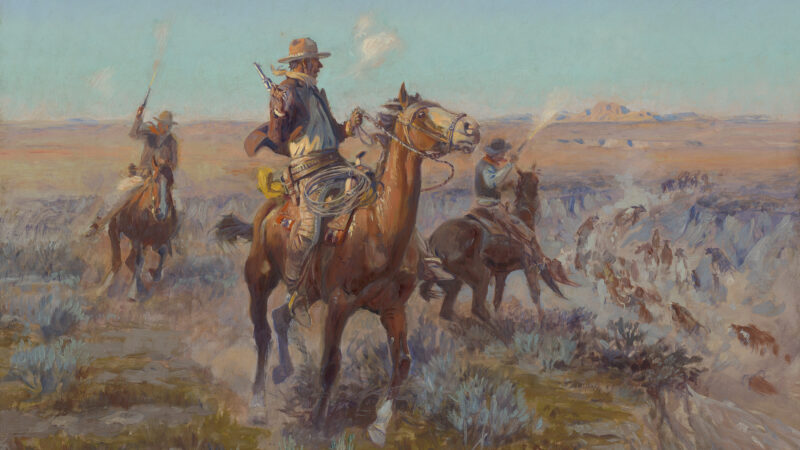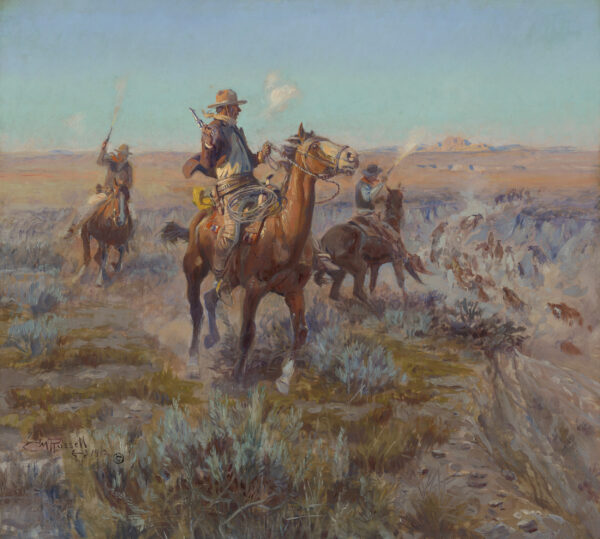
Charles M. Russell and the American West
January 3, 2012 - December 11, 2022
Charles M. Russell Gallery
About This Exhibition
The American West has special majesty in its expansive landscape and many cultures. Among legions, Charles Marion Russell (1864–1926) is one of the premier artists of the historic American West.
Stories and images of the American West of the 19th- and early 20th-century reflect a fascinating combination of fact and fiction—in the visual arts as well as popular culture. In fact, as Russell painted the West, historians already acknowledged its end. Frederick Jackson famously noted the closing of the frontier and Old West in 1893. Russell’s depictions of the Old West, therefore, weave nostalgia with the artist’s focused storytelling. Viewers see traditions and virtues of the West as Russell envisioned them.
Charles Russell grew up in St. Louis and first traveled west in 1880. He lived as a ranch hand and only committed himself fulltime to his art in 1893. He settled in Great Falls, Montana, in 1897. Russell depicted the romance and allure of life in the Wild West, and his scenes of cowboy adventures and American Indian hunting are captivating. They reveal an idealized even glorified slice of the Old West, while this chapter of American history is nuanced, complicated, and was at times lawless and dishonorable.
Russell’s firsthand experience outdoors as a ranch hand and with Native Americans lends important authenticity to his distinctive realism, and it contributed to his strong reputation for careful accuracy.
The Wichita Art Museum holds a prized collection by Charles Russell, thanks to the generosity of passionate collector and museum leader M.C. Naftzger (1884–1972) and his family. In Wichita, Naftzger Memorial Park on Douglas Avenue is named for M.C. Naftzger.

Charles M. Russell, Smoking Cattle Out of the Breaks, 1912. Oil on canvas, 30 1/4 x 33 inches. Wichita Art Museum, M. C. Naftzger Collection